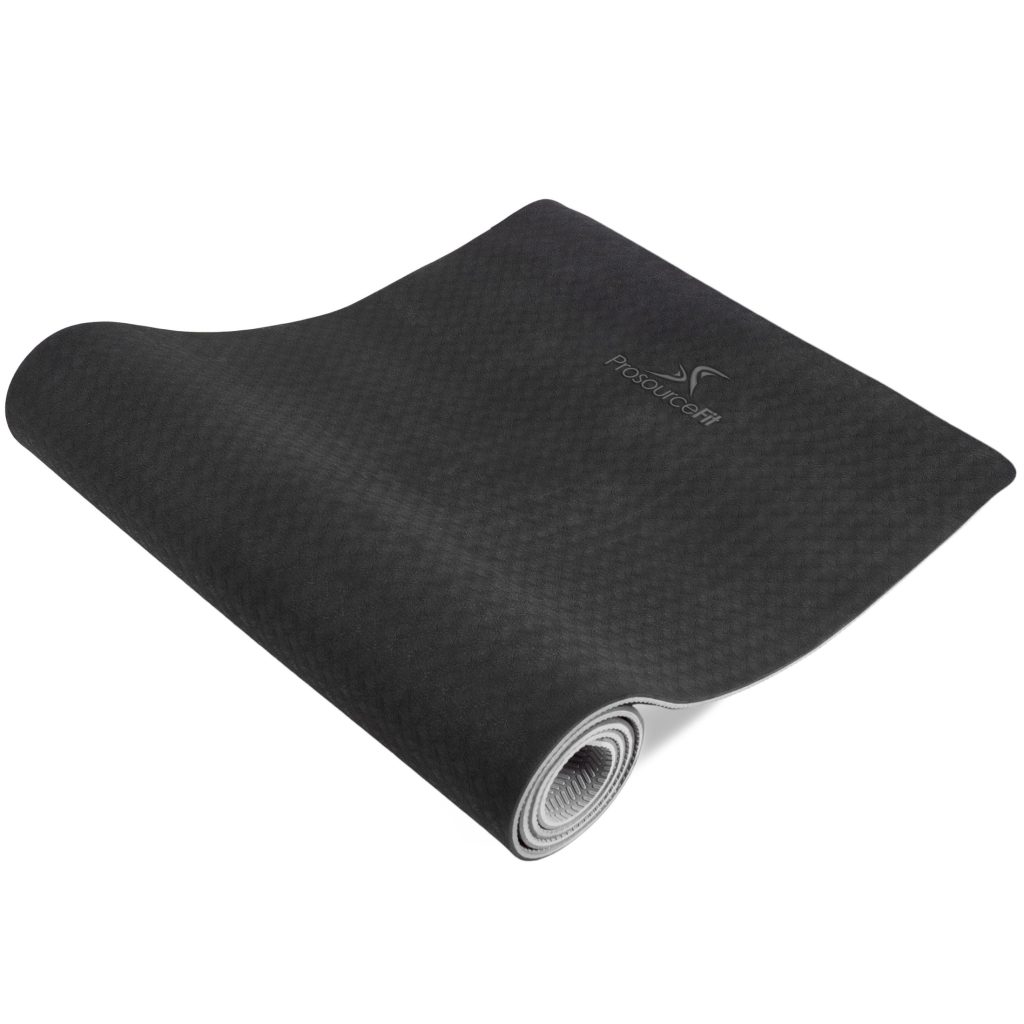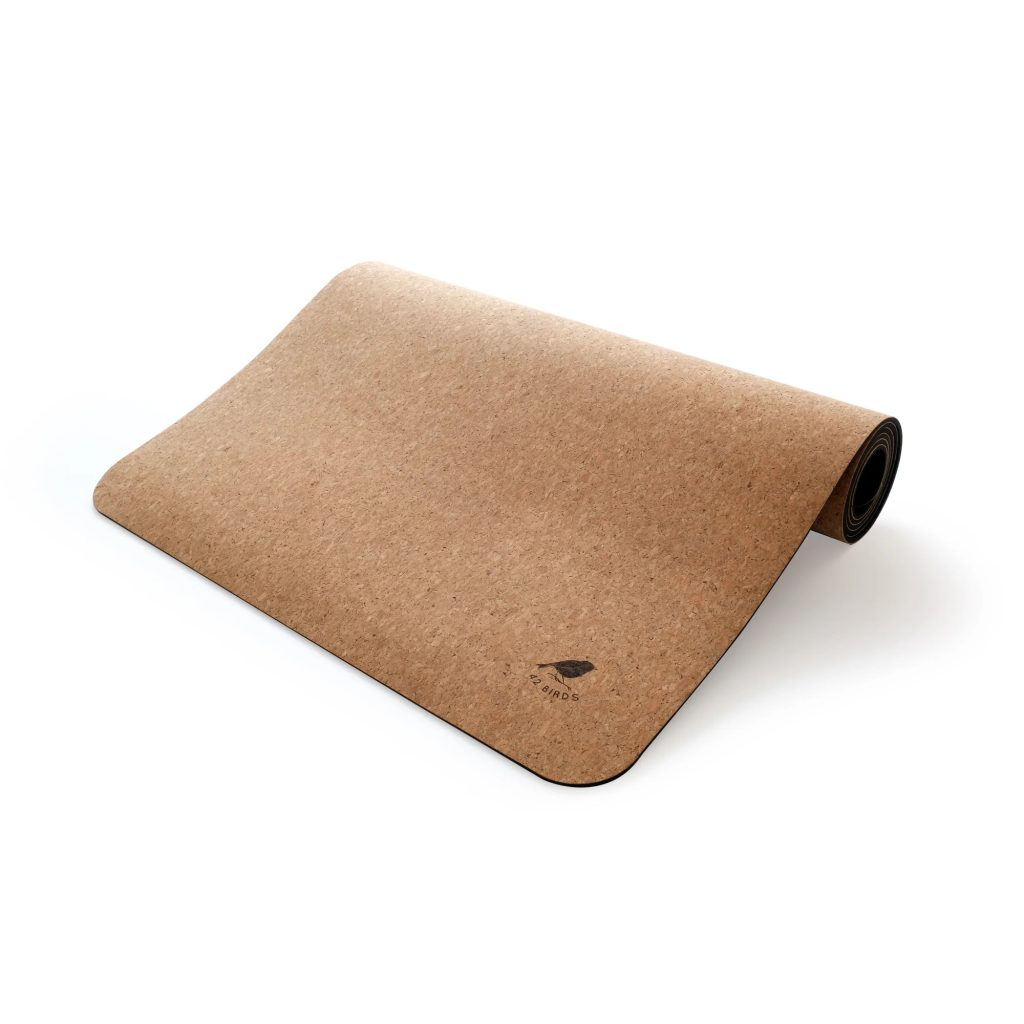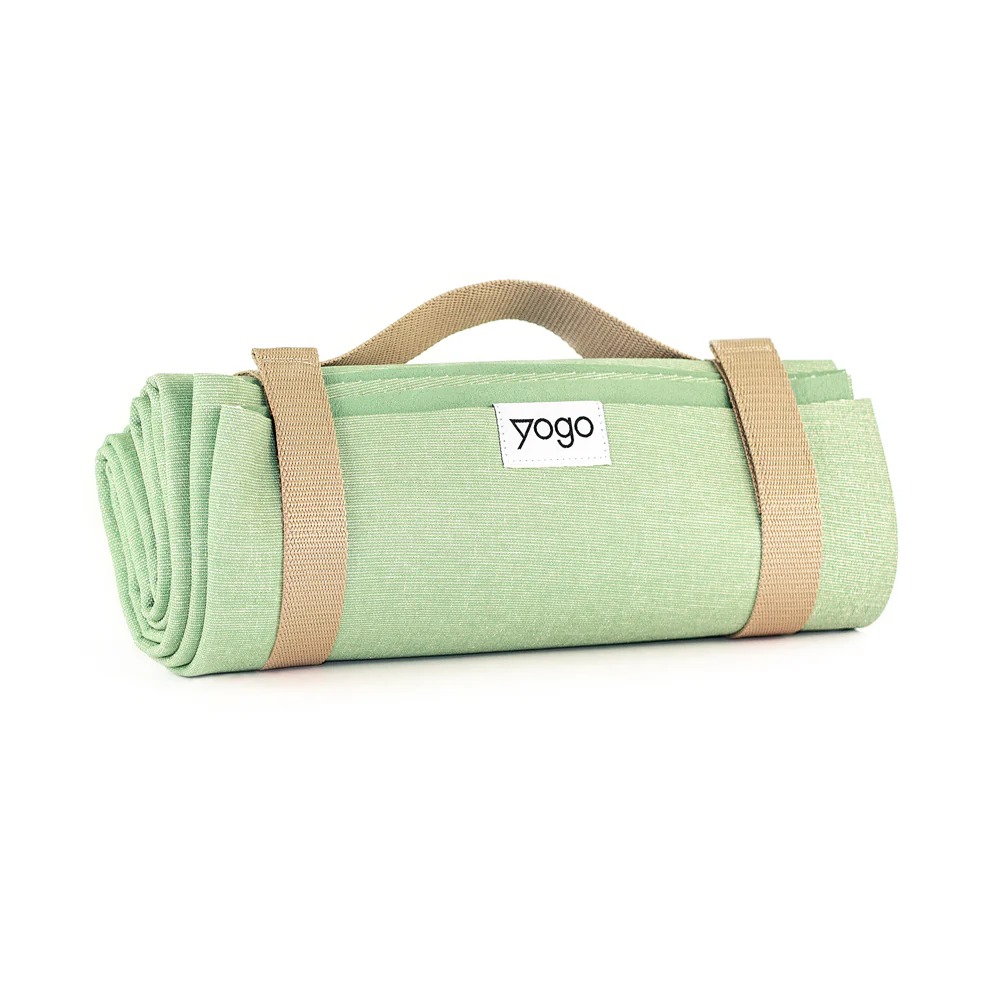Introduction to Yoga Mat Sizes
How long should my yoga mat be? Yoga is both a physical and a spiritual practice that enhances well-being. For most yogis, a yoga mat is a personal space where they meditate, stretch, and strengthen their bodies. The right yoga mat size can greatly affect your practice, providing the necessary support, comfort, and space to execute various poses safely and effectively.

Standard Yoga Mat Dimensions: Length and Width
When selecting a yoga mat, standard dimensions are a good starting point. These typically measure 68 inches in length and 24 inches in width. These sizes provide ample space for most yogis during various poses.
However, it’s important to note that not everyone will find the standard size ideal. For instance, taller individuals may require a longer mat. This is where knowing ‘how long should my yoga mat be’ becomes crucial for comfort during your practice. Mats can stretch up to 84 inches for those who need the extra length.
Width is equally important, especially for those who desire more elbow room. While the standard width is suitable for many, there are wider options available. These can measure up to 36 inches across, offering additional space to move freely and comfortably.
Importance of Thickness in Yoga Mats
The thickness of a yoga mat significantly impacts your comfort and practice. When selecting a yoga mat, consider the types of poses you primarily perform. For floor poses, a thicker mat can cushion your joints. Thicker mats, ranging up to 10mm, offer substantial support ideal for Yin or Restorative Yoga. However, if you engage in dynamic types of yoga requiring balance, thinner mats between 1-3mm keep you stable.
Yogis who travel often or need portable mats might opt for thinner options. These are lightweight and compact, facilitating ease of transport. For those practicing daily or in a studio, durability and joint comfort might be more critical, so slightly thicker mats may be more suitable.
Material Matters: From PVC to Eco-friendly Options
The material of your yoga mat influences grip, durability and eco-friendliness. Traditional PVC mats offer strong grip and last long. They support steady poses and intense practice well. But, PVC is not the best for the environment.
Eco-friendly yoga mats are rising in popularity. Materials like natural rubber or TPE provide good grip and are better for nature. They can match the grip and comfort of PVC mats without harming the planet.
Cork mats are a great eco-friendly choice. Apart from being sustainable, they have a unique grip that increases when wet. This makes cork mats ideal for hot yoga styles. They give a different feel and add to your practice’s sustainability.
Considering materials helps align your yoga values with your practice. Whether you want the lasting grip of PVC or the eco-friendly touch of cork or TPE, the right material enhances your yoga experience. Next time you’re choosing a mat, think about what matters to you most. Your yoga mat not only supports your poses but can also reflect your care for the environment.

Specialty Yoga Mats: Advantages of Travel, Extra Long, and Wide Mats
Specialty yoga mats meet diverse needs beyond standard mats.
Travel Mats
Travel mats are lightweight and compact, ideal for yogis on the move. They easily fit into luggage or backpacks, making them perfect for travel. Though thinner, they provide adequate support for a comfortable session away from your regular practice environment.
Extra Long Mats
Extra long mats cater to taller yogis, providing sufficient length. These mats can reach up to 84 inches, ensuring no part of your body is off the mat during practice. This additional space is crucial for performing all poses comfortably and effectively.
Wide Mats
Wide mats offer more side-to-side space, beneficial in crowded classes or for those who value more room. These mats can be up to 36 inches wide, providing ample space for diverse poses and personal comfort.
Specialty mats enhance your yoga experience. They ensure comfort, adequacy in space, and convenience for all yogis, tailored to various needs and preferences. Whether you’re traveling, tall, or simply prefer more room, there’s a specialty mat designed for you.
Measuring for the Right Fit: Body Type and Practice Style
Choosing a yoga mat that fits your body and yoga style is key. Taller individuals might need longer mats, while wider options cater to those seeking extra space. Your body type influences the length and width of your ideal mat. If you’re tall, aim for a mat that’s at least 72 inches. This will allow for a full stretch without feeling restricted. Width is important for freedom in poses, so consider mats up to 36 inches wide.
Consider your yoga style as well. Dynamic practices like Vinyasa need a mat that offers stability. This could mean opting for standard thickness around 1/8 inch. If you enjoy Restorative yoga, choose a thicker mat for comfort. Travel yogis should look for lightweight and foldable options.
Measure your space to ensure your mat suits your practice environment. Use a tape measure to find the right size for your body. Remember, the right mat size can enhance your experience, providing comfort and allowing for full expression in every pose.
Popular Yoga Mat Brands and Their Dimensions
When it comes to choosing a yoga mat, brand dimensions can guide your decision. Brands like Lululemon, Manduka, and Gaiam are leaders in the yoga mat industry, offering different sizes to fit various needs.
Lululemon Yoga Mats
Lululemon mats often measure 71 inches long and 26 inches wide, more roomy than standard mats. This size caters well to those seeking extra space during practice.
Manduka Yoga Mats
Manduka is known for mats that are 71 inches in length and 24 inches wide. They balance space and support, fitting most body types well.
Gaiam Yoga Mats
Gaiam mats typically come in at 68 inches by 24 inches. They offer a variety of thicknesses and are great for those sticking to the standard size.
These brands consider users’ different body sizes and practice styles. Long-lasting materials and thickness for comfort are common across these popular choices. Your ideal pick will depend on your personal ‘how long should my yoga mat be’ answer, your daily use, and where you’ll store it. Whether you prefer a cozy fit or a bit more elbow room, there’s a size to enhance every yogi’s practice.

Caring for Your Yoga Mat: Tips for Longevity
Caring for your yoga mat properly will extend its life and keep it ready for practice. Here are some straightforward tips to help you maintain its longevity.
Clean Regularly
Clean your yoga mat often to prevent the buildup of dirt and odors. Use a gentle, non-abrasive cleaner and a soft cloth to wipe it down after each use. For a deeper clean, you can occasionally rinse it with water and let it air dry. Avoid harsh chemicals which can break down the material.
Store Properly
Store your mat in a cool, dry place away from direct sunlight. Roll it up loosely with the top side facing out to avoid damage. This keeps the edges from curling and maintains the mat’s shape.
Handle with Care
Avoid wearing shoes or having sharp objects near your mat to prevent tears and punctures. Also, keep it away from pets to prevent claw marks. Respect your mat as a pivotal part of your yoga journey.
Be Mindful of the Mat’s Material
Remember that different materials require different care. PVC mats may tolerate more vigorous cleaning, while natural rubber or cork mats need gentler methods. Always follow the care instructions provided by the manufacturer.
Rotate for Even Wear
Use different parts of the mat during your practice to spread the wear evenly. This prevents the mat from thinning out or getting worn in the same areas too quickly.

Conclusion:
Selecting the best yoga mat greatly enhances your practice. It ensures comfort, provides stability, and even adds to your yoga habit’s longevity. In your quest to find the perfect mat, consider not just the color or design, but how the mat’s dimensions, material, and thickness fit with your physical needs and the types of yoga you enjoy.
